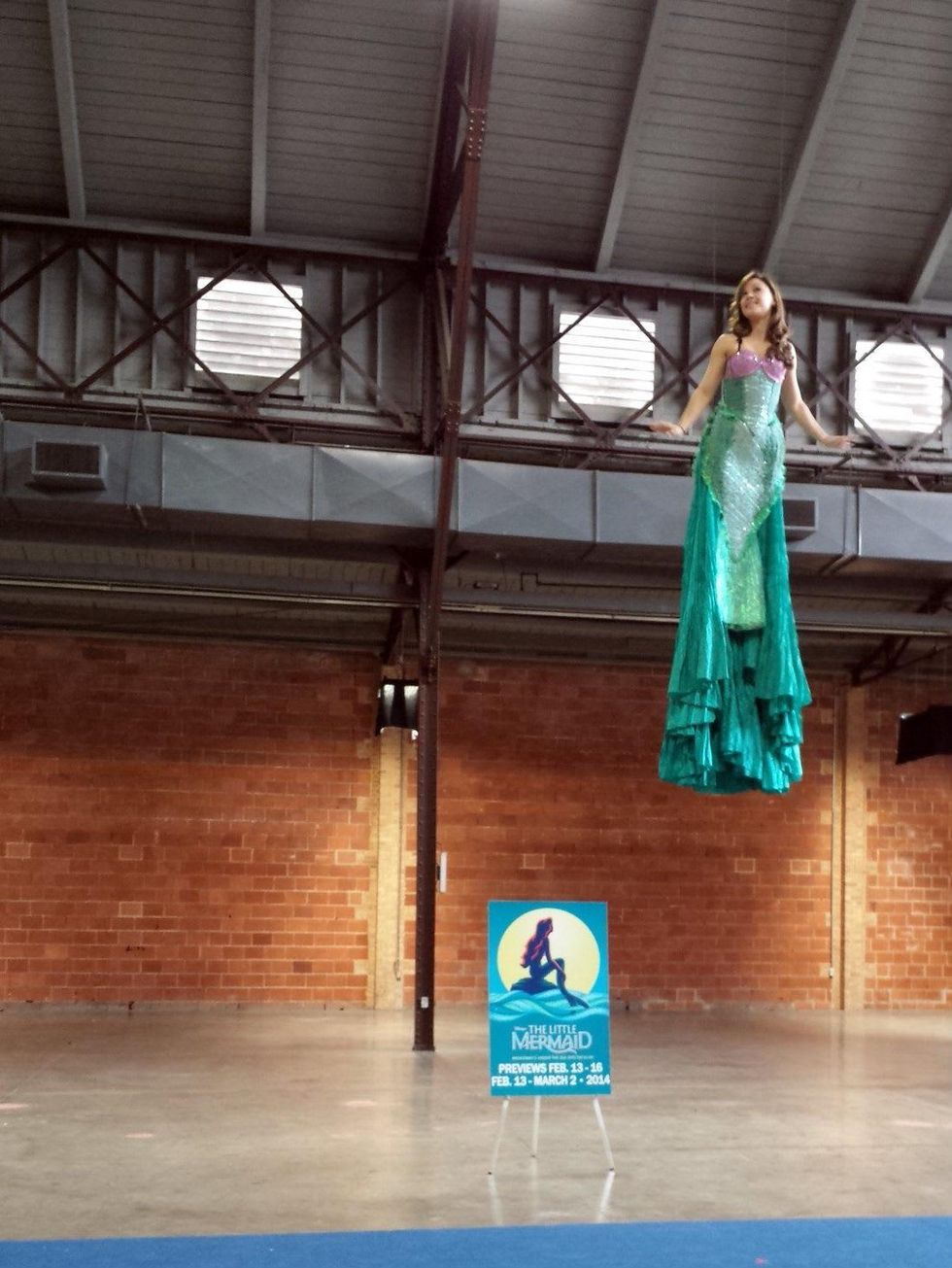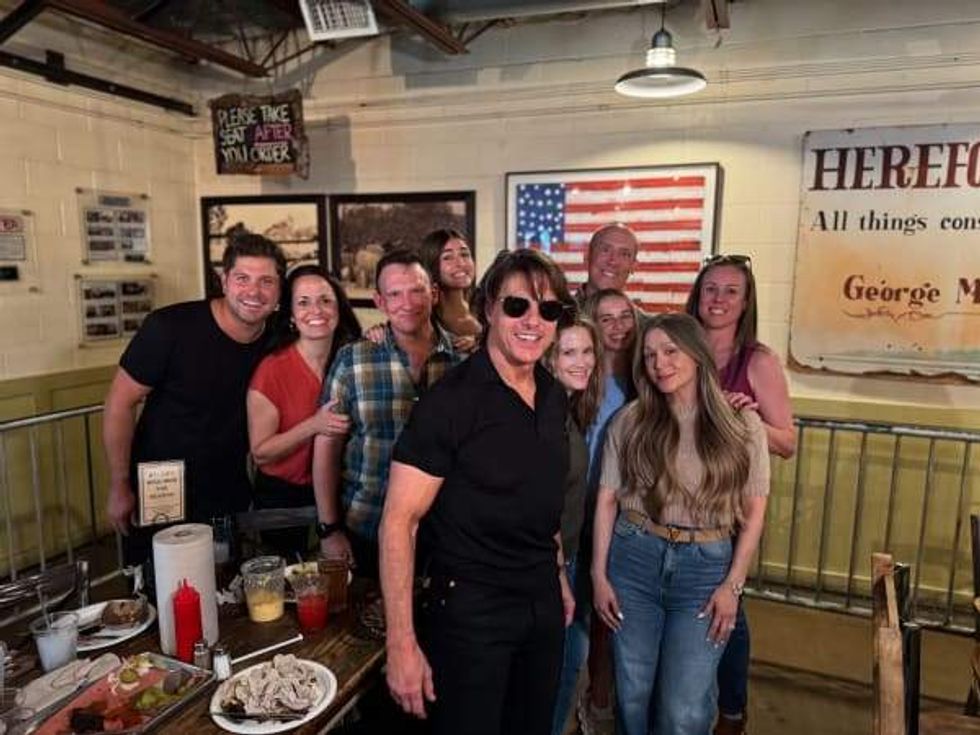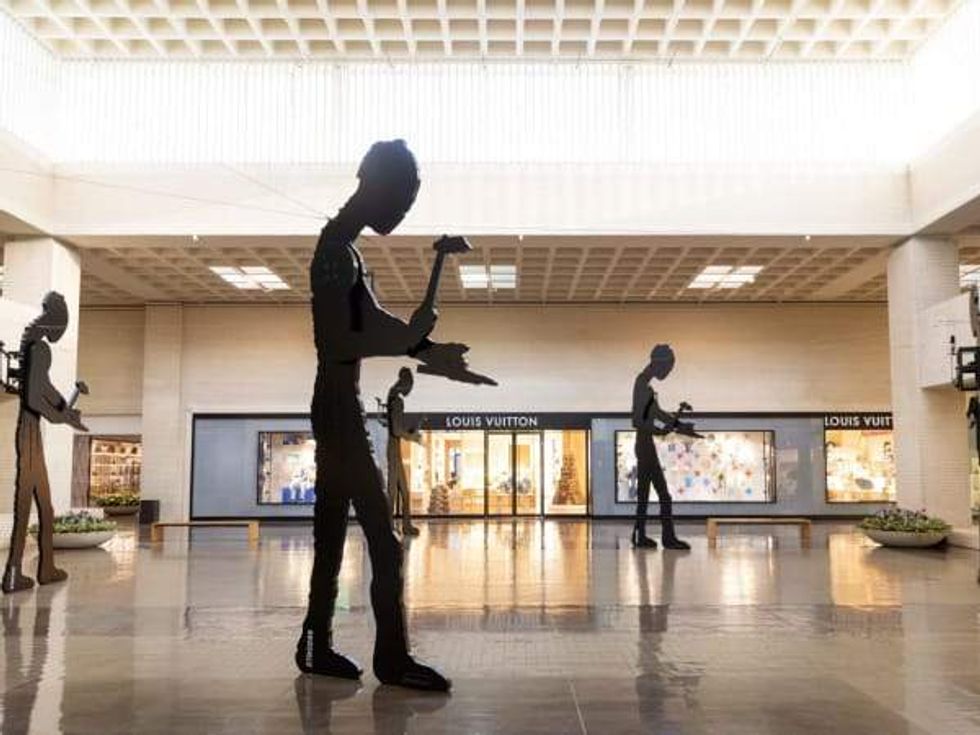Fly Girls
Behind the flying — er, swimming — magic of Disney's The Little Mermaid
It's surprisingly warm inside Centennial Hall at Fair Park, but that may be because I am wearing two pairs of pants.
This is not because it is frigid outside the cavernous building, although the city is in the throes of another mini-ice storm. "Double pants" was a stipulation from Paul Rubin and the company Flying by Foy, who have been hired to create the swimming and flying effects for the national tour of The Little Mermaid, which plays the Music Hall February 13 through March 2.
Two pairs of pants are necessary because I am about to be strapped into a harness, attached to wires and flown across Centennial Hall. The extra pair will help disguise the harness, just as the extra shirt I'm wearing will fall well below the nylon straps and help complete the illusion that I am really floating.
To watch Chelsea Morgan Stock, who plays Ariel, you'd think she's been flying for most of her life.
The Little Mermaid cast and crew have only been rehearsing in Dallas with the flying setup for four days at this point, but to watch Chelsea Morgan Stock, who plays Ariel, you'd think she's been flying for most of her life. After being securely hooked in by the crew, she's gracefully lifted into the air, the impossibly long and sequined "tail" of her mermaid dress rippling, and she begins to sing "Part of Your World" while the electronically controlled track casts her gently back and forth, up and down.
The entire time, she softly waves her arms and swishes her legs, giving the remarkable impression that she is, indeed, swimming underwater. I am not more than four feet away, and I cannot see the wires.
The first musical adaptation of Disney's The Little Mermaid ran on Broadway from 2008-2009. (Stock was in the ensemble and took over the role of Ariel near the end of the run.) There was no flying then; instead, the actors were famously outfitted with wheeled shoes. When Glenn Casale was asked to reimagine and direct the musical for its national tour, he knew that the most important change would be to get his actors up in the air.
"There was no fantasy to it before," Casale says. "With everyone on the same level, it was impossible to distinguish between the above- and below-water worlds."
Six actors now fly in the show, which Casale says is the version that Disney will be licensing from now on. The wheeled shoes remain only in the costumes for the nefarious eels, Flotsam and Jetsom. Flounder, Ariel's sidekick, gets around on a flexible skateboard. Scuttle, the seagull, is the only character who truly "flies." Everyone else "swims," an important distinction that I am corrected about several times throughout the morning.
Once Tim, a Flying by Foy director, cinches me into the harness, I walk like a cowboy over to the blue foam mats and stand on the taped "X" to await instructions. "The Fly Guy" himself, Paul Rubin, gives me pointers on how to swim in the air, and I listen because this man knows what he's talking about.
Arms, knees, feet — I'm having a hard enough time keeping these appendages moving and in the proper sequence, let alone worrying about singing or acting.
He's created the aerial sequences in Wicked, Dance of the Vampires and The Pirate Queen, to name only a few, and he's choreographed more than 300 productions of Peter Pan in eight different countries. When he tells me to bend my knees upon landing, I will certainly remember to do so.
"You'll be surprised how similar movement in the air is to moving in the water," Rubin says. "When I say 'left,' you'll cast your right arm out just as if you were swimming. Pretend there's resistance. That momentum will propel you to the left."
This is when I realize I will be expected to re-create a flying routine instead of just hanging there, being flung wherever the computer sends me. The machines are computerized, Tim has told me, with each movement programmed into the system. In the early days of Flying by Foy, men simply hoisted ropes on cue.
After a pat on the back from each technician to reassure me that I am hooked up properly, Rubin tells me to bend my knees, press down with my arms as if I am diving toward the surface, and suddenly my feet are off the floor. I'm raised up what feels like 40 feet (but is probably only 10), flapping my arms more like Scuttle than Ariel.
"Keep your knees together!" Rubin calls. "And don't forget to kick your feet."
Arms, knees, feet — I'm having a hard enough time keeping these appendages moving and in the proper sequence, let alone worrying about singing or acting.
"How do you do this?" I cry down to Stock. "I have no idea how you do all this at once." She merely laughs. Later, she tells me that she only does two one-hour sessions of flying a day. To look that comfortable in the harness, I would have guessed twice that amount.
Tim speaks a command into his headset, and I'm lifted even higher for the grand finale. I'm only looking out over the inside of Centennial Hall, but it's still a perspective that very few people will ever get to experience. That alone makes me feel like I'm really flying.




 Guy Fieri and Oren Salomon Courtesy photo
Guy Fieri and Oren Salomon Courtesy photo  Tom Cruise in Dallas Tribal Cafe
Tom Cruise in Dallas Tribal Cafe  The 2026 FIFA World Cup will be played at AT&T Stadium in Arlington and other venues in the U.S., Mexico, and Canada. Photo courtesy of CONCACAF
The 2026 FIFA World Cup will be played at AT&T Stadium in Arlington and other venues in the U.S., Mexico, and Canada. Photo courtesy of CONCACAF  Hammering Men, 1982 NorthPark Center
Hammering Men, 1982 NorthPark Center